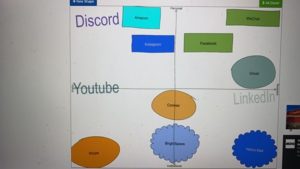A social media expert, Eric Stoller, elucidated that digital identity, though ill-defined, is one’s presence online. That is, what someone posts, shares, how they interact with people online, and how they use digital tools for their individual benefits. Everything an individual does on the web represents their digital identity. Digital identity, therefore, is essentially any personal data existing online that can be traced back to the real you. For example, photos uploaded on social media, posts created or commented on, online bank accounts and even search engine histories.
An individual’s digital identity holds sizeable value. For instance, an individual might post content on the web, that potential employers might see and instantaneously become attracted, giving the individual an added extra. On the hand, another individual who posts unruly content, risks having their careers ruined, or rather losing all potential employers or investors, owing to their inimical posts. In sum, Digital Identity is any set of an individual’s attributes which can be accessed by technical means and identify a specific individual within any set of individuals. Typically, there is no specific thing such as “a digital identity,” rather, several of them (IGI Global, n.d.)
There are two main approaches to digital identity, personal approach and professional approach, all of which affect social media use. Professional identity is, professional introspection of a person, based on beliefs, character traits and experiences. Professional identity, from a finance perspective for example, is how a financier defines himself in his profession. Digital Professional Identity therefore is professional identity that is developed via online social interactions by utilizing communication channels and online platforms (Mahboob et al., 2019, p. 33). Professional approaches to digital identity affect social media use positively. In view of the fact, professionals use social media to ameliorate their various professions, for instance, professional artists post their masterpieces on social media and online art rooms, where they obtain their clientele.
On the flip side, personal identity is the understanding of self that an individual obtains as he or she approaches dotage (Admin, 2015). Digital Personal identity therefore is simply an individual’s day-to-day interactions with the web. Personal approaches to digital identity affect social media use both positively and negatively. On the positive side, an individual may use social media as a platform to sell their product or adroitness. On the contrary, an individual may use social media to promote violence, cyber bullying, or internet tension. An individual may also, through their posts, demean themselves, locking themselves out of opportunities.
Networked publics is the gap created through networked technologies, and the pictured combination that arises from the convergence of individuals, their practices, and technology. (Boyd, 2010, p. 39). Networked publics, like other types of publics, have many similar functions. Digital Identities converge in network publics in that, a person’s identity, is envisioned differently across various mediums of communication be it personally, on the web or on phone. In a face-to-face situation, one can cautiously gauge the context to decide what actions to take, and how to present himself. Facebook, a networked public, is an online social networking site, described by multiple features which allow individuals to make public identities, comprehend a group of individuals with mutual connections, and move among those connections as they wish.
From the Davos 2019 press conference, Mary Snap outlines a major benefits of digital identities converging with networked publics. She asserts that networked publics provide a set of standards by which digital identities could be developed in many different cases using many different kinds of platforms and applications, thereby enabling the prevalence and use of digital identity.
References
Admin. (2015, August 15). Difference between personal identity and social identity. Compare the Difference Between Similar Terms. https://www.differencebetween.com/difference-between-personal-identity-and-vs-social-identity/
Boyd. (2010). Social network sites as networked publics: Affordances, dynamics, and implications. A Networked Self, 39-58. https://doi.org/10.4324/9780203876527-8
IGI GLOBAL. (n.d.). What is digital identity. IGI Global: International Academic Publisher. https://www.igi-global.com/dictionary/internet-identity-and-the-right-to-be-forgotten/7638
Mahboob, U., Jawed, S., & Yasmeen, R. (2019). Digital professional identity: Dear internet! Who am I? Education for Health, 32(1), 33. https://doi.org/10.4103/efh.efh_232_17

Recent Comments